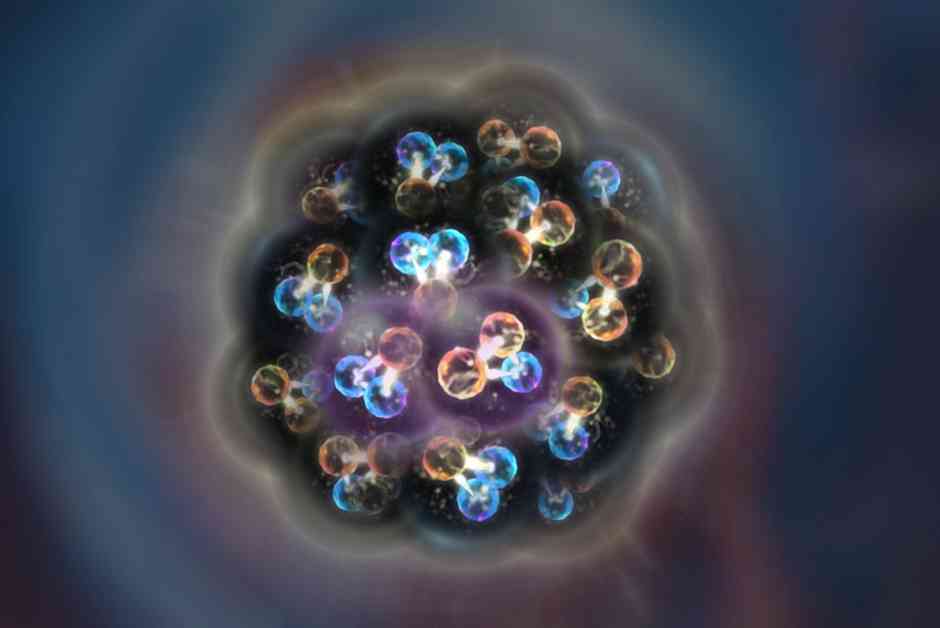The structure of an atomic nucleus is a complex system made up of protons and neutrons, which are composed of quarks bonded by gluons. While these components have been known for almost a century, it has been a challenge to fully explain the properties of atomic nuclei using only quarks and gluons. However, a recent breakthrough by an international team of physicists has successfully integrated these fundamental particles into a unified model.
Traditionally, atomic nuclei have been described using protons and neutrons at low energies and quarks and gluons at high energies. The inability to reconcile these two descriptions has been a long-standing issue in nuclear physics. By using data from high-energy collisions, including experiments at the LHC accelerator at CERN, researchers were able to develop a new approach to studying the partonic structure of atomic nuclei.
This innovative method involved extending parton distribution functions to account for correlated nucleon pairs within atomic nuclei. By considering the pairing of nucleons, particularly proton-neutron pairs, the researchers were able to improve the accuracy of their theoretical model and better match experimental data. This approach not only provides a more precise description of parton distributions in atomic nuclei but also offers new insights into the behavior of atomic nuclei at both high and low energies.
The results of this study mark a significant advancement in our understanding of the atomic nucleus, shedding light on the intricate interplay between quarks, gluons, protons, and neutrons. By bridging the gap between high-energy and low-energy descriptions of atomic nuclei, researchers have laid the groundwork for further exploration of the complex structure of matter at the most fundamental level.
This breakthrough opens up new possibilities for future research in nuclear physics, offering a more comprehensive and unified perspective on the composition and behavior of atomic nuclei. The successful integration of quarks and gluons into the study of atomic nuclei represents a major step forward in the field of particle physics, with implications for our understanding of the fundamental building blocks of the universe.













